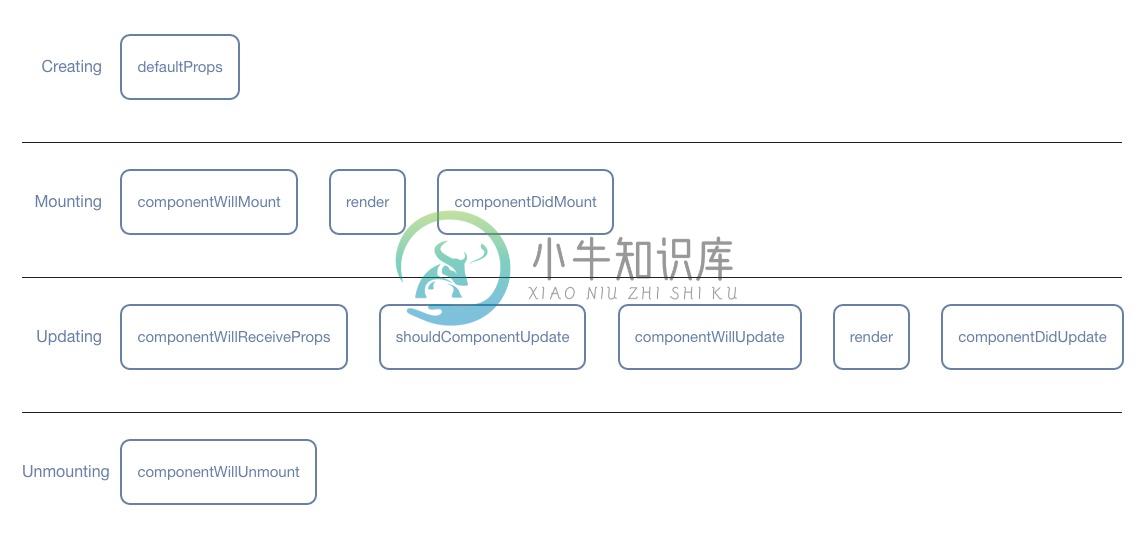3.3 组件生命周期
优质
小牛编辑
128浏览
2023-12-01
与React 组件一样,Rx组件同样具备以下生命周期
- 组件加载: componentWillMount
- 组件加载: componentDidMount
- 组件更新: componentWillReceiveProps
- 组件更新: shouldComponentUpdate
- 组件更新: componentWillUpdate
- 组件更新: componentDidUpdate
- 组件卸载: componentWillUnmount

- 初始化: constructor:构造函数
componentWillMount:该函数会在render函数前被执行,且一般只会执行一次。- 组件渲染: render
componentDidMount:这个方法会在组件加载完毕之后立即执行。在这个时候之后组件已经生成了对应的DOM结构,可以通过this.getDOMNode()来进行访问。如果你想和其他JavaScript框架一起使用,可以在这个方法中执行setTimeout, setInterval或者发送AJAX请求等操作(防止异部操作阻塞UI)。componentWillReceiveProps:在组件接收到一个新的prop(或者更新)时被执行。这个方法在初始化render时不会被调用。如果你需要考虑性能,特别是在有上百个组件时,可以使用shouldComponentUpdate来提升应用速度。shouldComponentUpdate:返回布尔值,决定组件是否更新。默认为true。componentWillUpdate:在组件接收到新的props或者state但还没有render时被执行。在初始化时不会被执行。componentDidUpdate:在组件完成更新后立即执行。在初始化时不会被执行。一般会在组件完成更新后被使用。例如清除notification文字等操作。componentWillUnmount:主要用来执行一些必要的清理任务。例如清除setTimeout等函数,或者任意的在componentDidMount创建的DOM元素。
具体的例子如下
import { createElement, Component } from 'weex-rx';
import { mount } from 'nuke-mounter';
import { View, Text, Button} from 'nuke';
class Demo extends Component {
render() {
return (
<View>
<Button onPress = {this.setNewNumber}>点击增加</Button>
<Text>{this.state.data}</Text>
</View>
);
}
constructor(props) {
super(props);
this.state = {
data: 0
}
this.setNewNumber = this.setNewNumber.bind(this)
};
setNewNumber() {
this.setState({ data: this.state.data + 1 })
}
componentWillMount() {
console.log('Component WILL MOUNT!')
}
componentDidMount() {
console.log('Component DID MOUNT!')
}
componentWillReceiveProps(newProps) {
console.log('Component WILL RECIEVE PROPS!')
}
shouldComponentUpdate(newProps, newState) {
return true;
}
componentWillUpdate(nextProps, nextState) {
console.log('Component WILL UPDATE!');
}
componentDidUpdate(prevProps, prevState) {
console.log('Component DID UPDATE!')
}
componentWillUnmount() {
console.log('Component WILL UNMOUNT!')
}
}
mount(<Demo />, 'body');
export default Demo;

